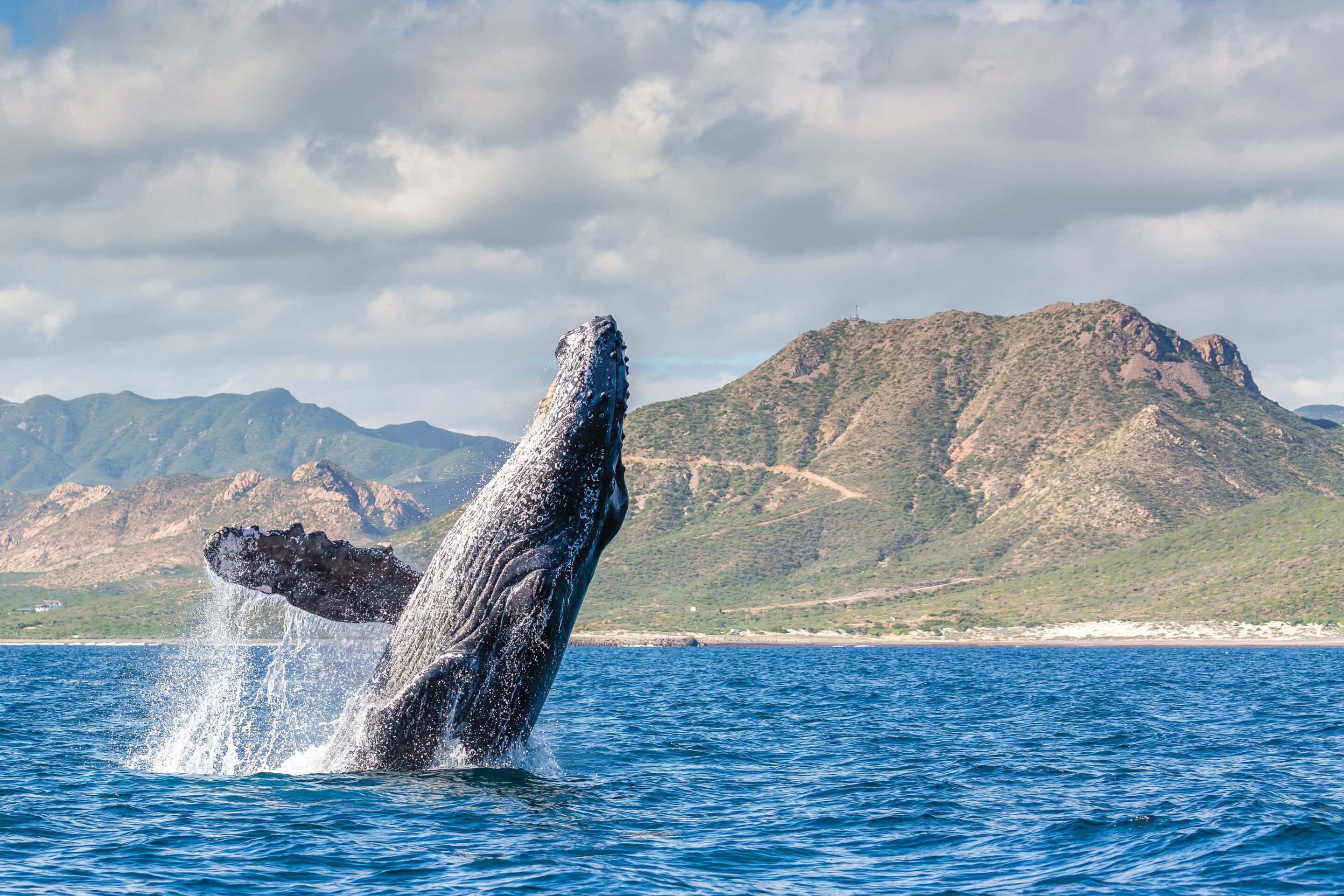Baja California is one of the most extraordinary places in the world for whale watching. This rugged peninsula, stretching nearly the length of the U.S. West Coast, is flanked by two wildly different bodies of water — the Pacific Ocean to the west and the Sea of Cortez to the east — creating a marine playground teeming with life. Every winter and spring, these waters transform into one of the planet’s most spectacular wildlife stages: the annual migration of whales.
Whether you dream of locking eyes with a curious gray whale calf in a remote lagoon or gliding across glassy waters in search of the planet’s largest animal — the blue whale — a Baja whale expedition promises some of the most intimate and awe-inspiring wildlife encounters you can experience anywhere.
In this guide, we’ll explore why Baja is such a legendary destination for whale watching, when to go, and which regions offer the most remarkable encounters.
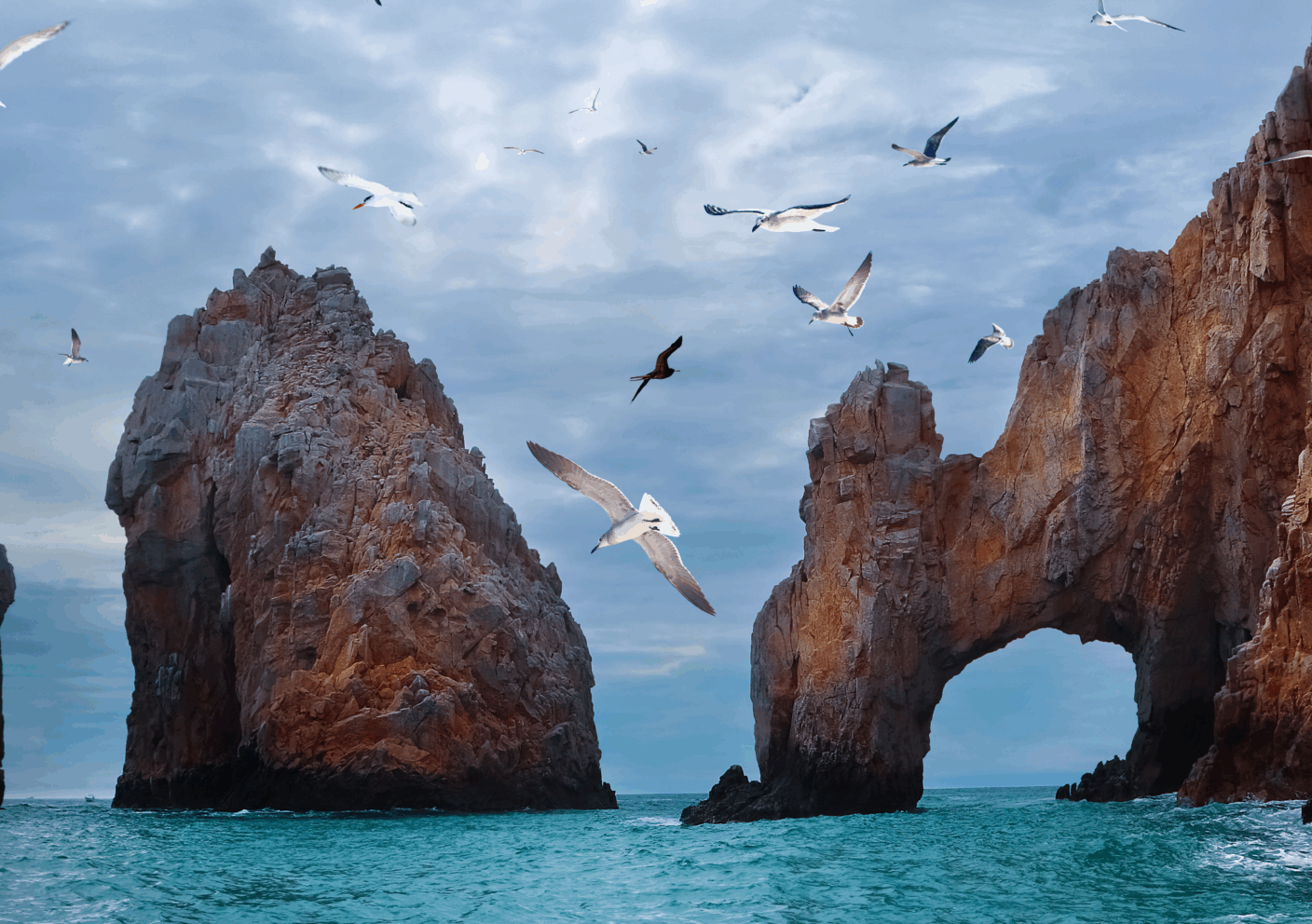
Why Baja Is the Ultimate Whale Watching Destination
Baja’s unique geography is perfectly suited to whales. The peninsula is only about 75 miles wide, which means you’re never far from the water — and both coasts host entirely different ecosystems. On the Pacific side, quiet lagoons provide safe nurseries for migrating gray whales to mate, give birth, and raise their calves. On the eastern side, the Sea of Cortez — famously called “the world’s aquarium” by Jacques Cousteau — is rich with nutrients that attract blue whales, fin whales, humpbacks, and pods of dolphins and orcas.
This diversity means that over 30 species of whales and dolphins either live in or pass through Baja’s waters each year. Add to this the region’s sunny skies, warm desert backdrop, and calm seas, and it’s no wonder that Baja California has earned its place as one of the best whale watching destinations on Earth.
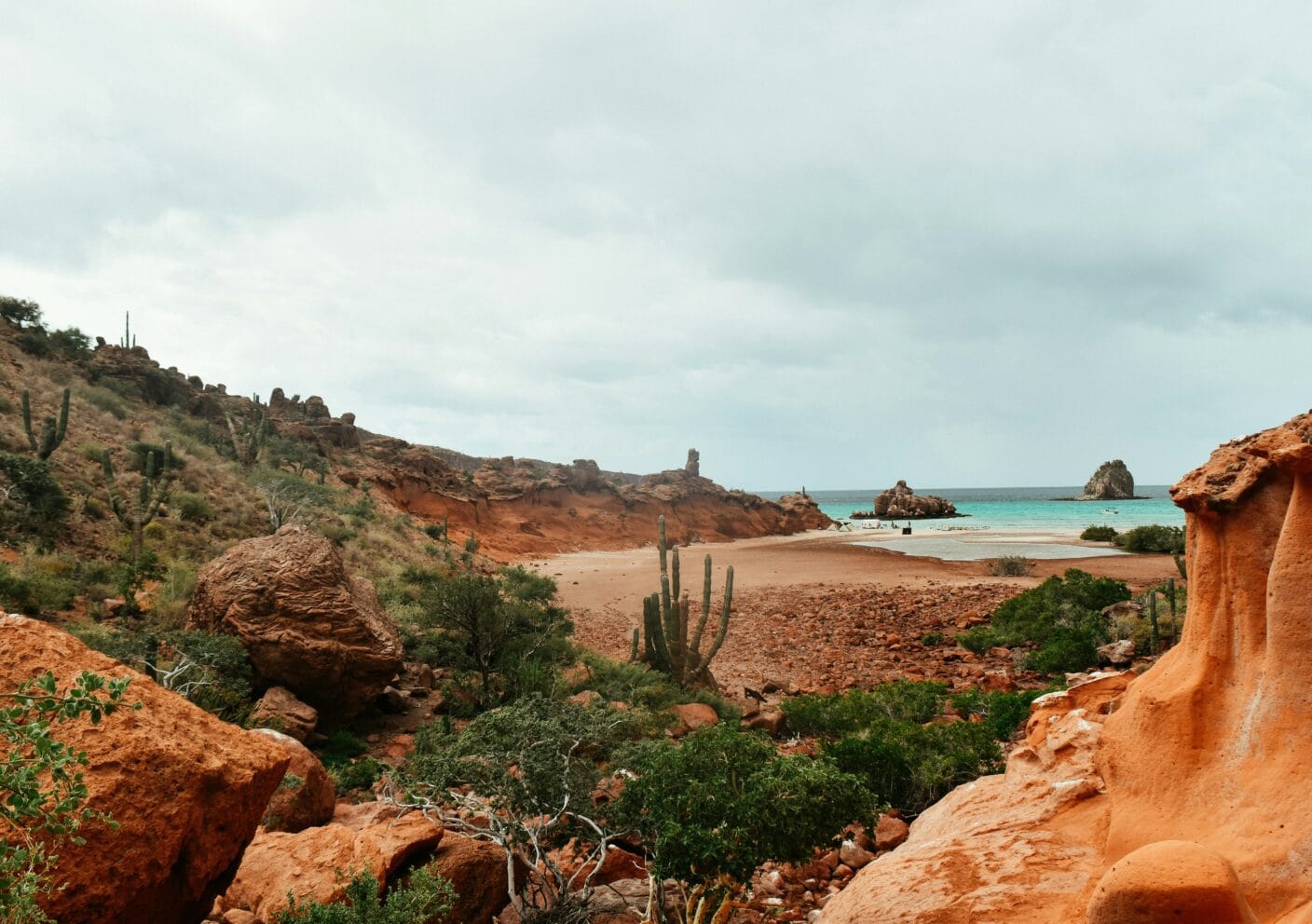
Best Time to See Whales in Baja
If your goal is to see as many species as possible, the prime Baja whale watching season runs from late December through early April, with the very best time being February through March.
- Gray Whales: Arrive in late December and stay through April, with the highest number of mother-calf pairs in February and March — the months when “friendly” whale encounters are most common.
- Blue Whales: Typically seen from January through March, peaking in February around Loreto in the Sea of Cortez.
- Humpback Whales: Present from December to April, with spectacular breaching displays often visible near Cabo San Lucas and La Paz.
For an expedition cruise traveler, this overlapping season is ideal. A well-planned itinerary can include both the gray whale lagoons on the Pacific side and the whale-rich waters of the Sea of Cortez — maximizing your chances of seeing multiple species on one journey.
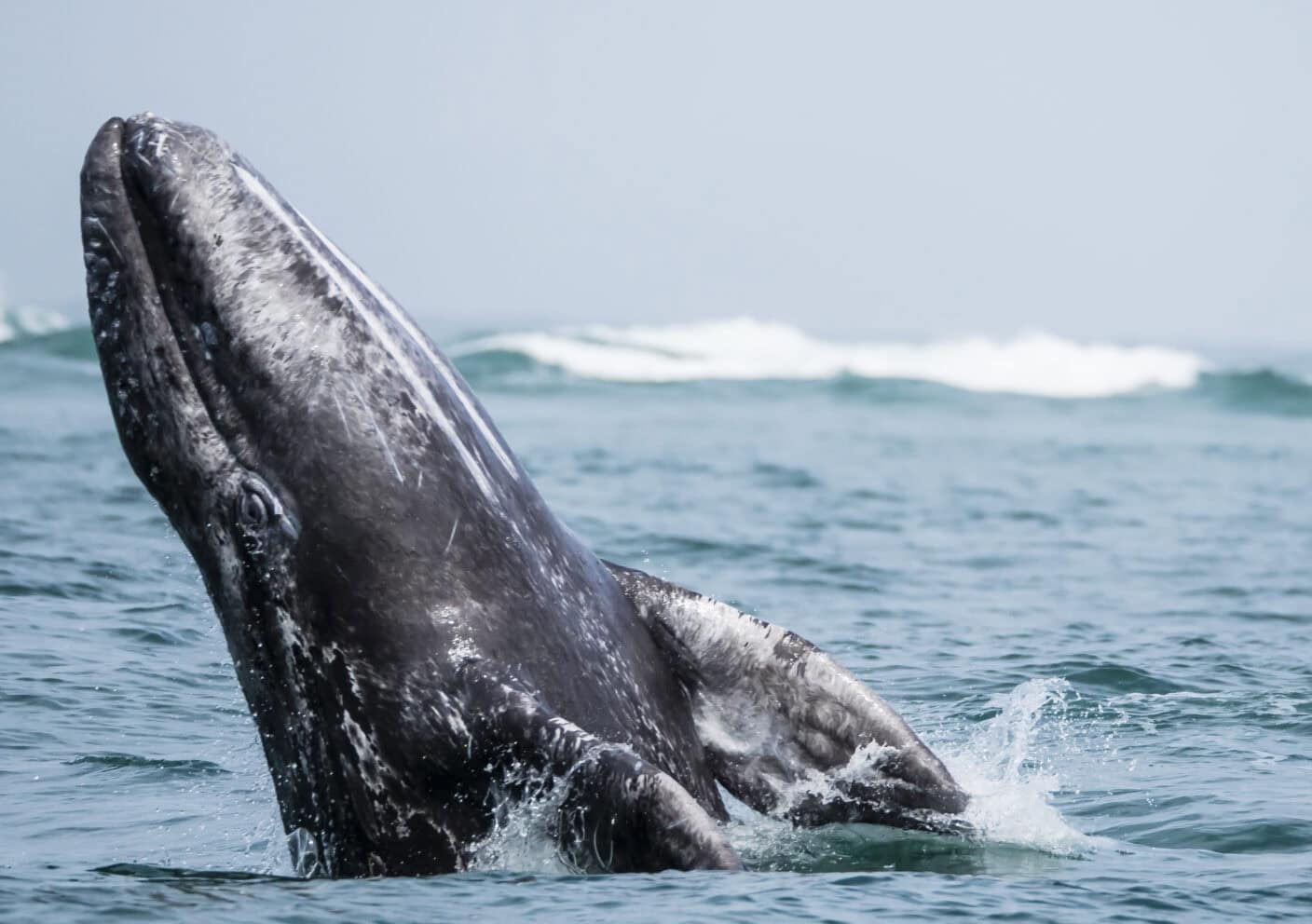
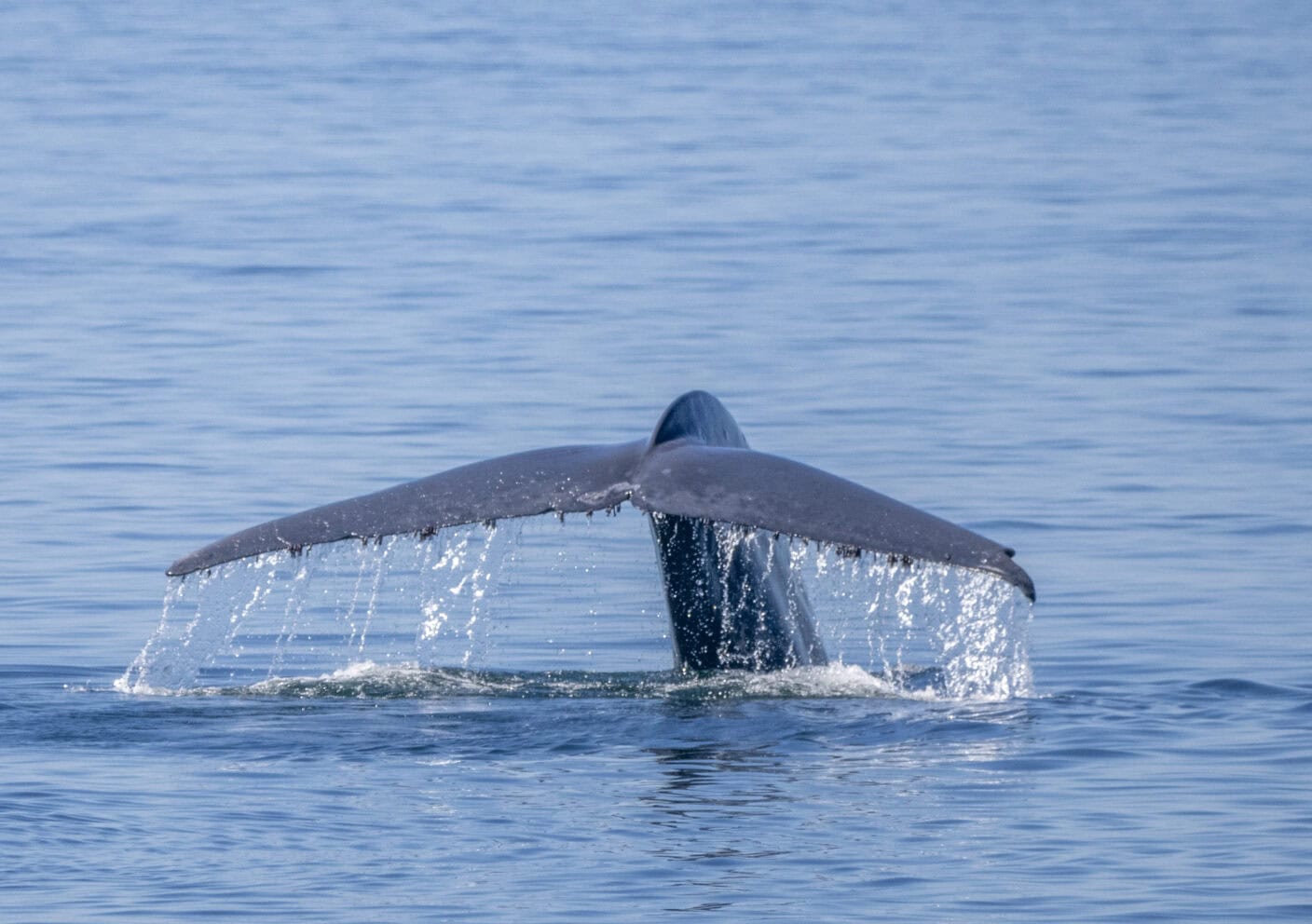
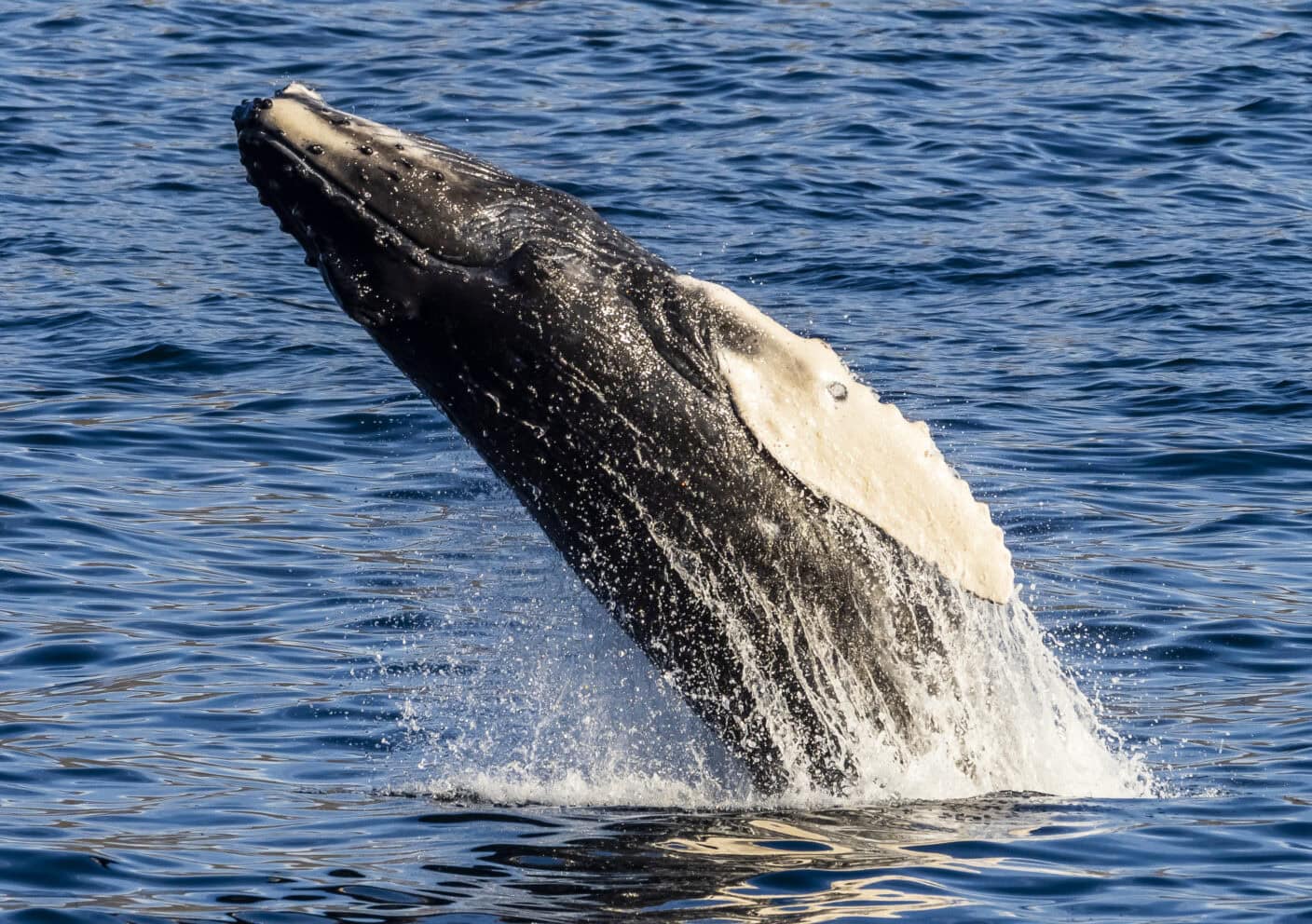
The Gray Whale Lagoons of Baja
San Ignacio Lagoon
If you’ve heard about Baja’s “friendly” gray whales, this is where the magic happens. San Ignacio Lagoon is the most intimate of Baja’s gray whale nurseries and is known for whales that approach small boats — sometimes even nudging up to the skiffs, inviting gentle touch.
Because San Ignacio is remote and highly protected, most travelers visit as part of a multi-day expedition, staying at safari-style eco-camps along the lagoon’s shores. This immersive experience offers multiple outings each day, increasing your chances of an unforgettable connection with a whale.
Laguna Ojo de Liebre
Farther north, near Guerrero Negro, this vast lagoon is home to the largest number of gray whales in Baja. Encounters can be just as thrilling, though the whales here tend to be slightly more reserved than in San Ignacio. The setting is stark and dramatic, with salt flats and desert landscapes creating a wild, off-the-beaten-path feel.
Magdalena Bay
The southernmost of Baja’s gray whale nurseries, Magdalena Bay is easily accessible from La Paz or Cabo and is popular with both independent travelers and small ship expeditions. While whale encounters here can be less predictable, Magdalena Bay offers much more than just whale watching: kayak through mangroves, hike along pristine sand dunes, or birdwatch for herons and ospreys.
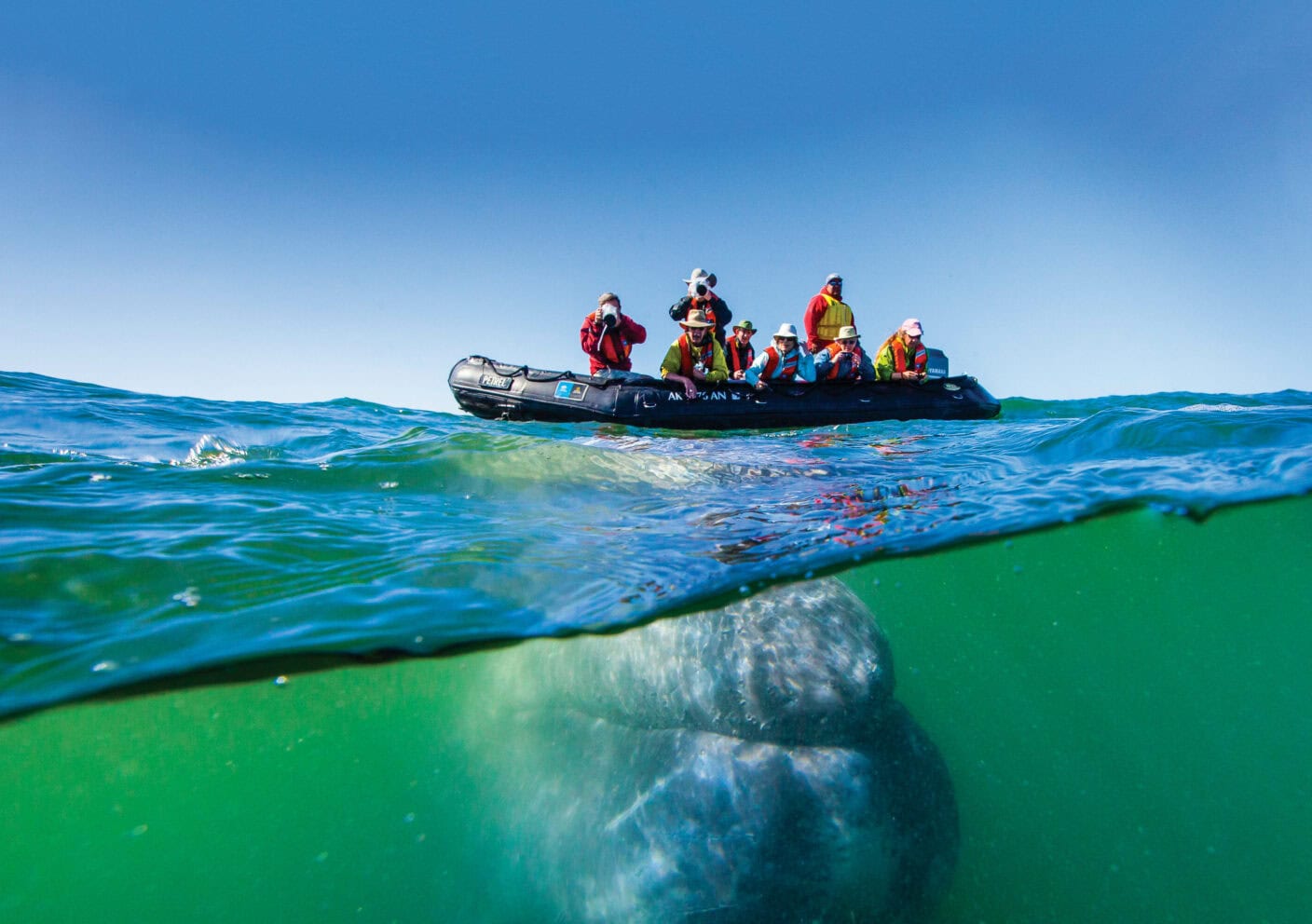
The Sea of Cortez: Blue Whales and Beyond
While the gray whales claim the Pacific side, the Sea of Cortez is home to a different kind of drama. Here, the nutrient-rich waters attract blue whales — the largest animals ever to have lived on Earth. Seeing one of these gentle giants surface just meters from your skiff is a moment you’ll never forget.
The best base for blue whale watching is Loreto, a charming town that serves as the gateway to Loreto Bay National Park (a UNESCO World Heritage Site). This protected marine area includes five islands and is sometimes called the “blue triangle” for its high density of blue whale sightings.
But Loreto offers more than just blues. Humpback, fin, and sperm whales also frequent these waters, along with playful dolphins, mobula rays, and sea lions that bask on rocky outcrops.
Farther south, La Paz offers additional opportunities for whale encounters and is one of the few places in the world where you can swim alongside whale sharks (seasonally, typically October–April). Pair this with a visit to Isla Espíritu Santo to snorkel with sea lions, and you have a truly diverse marine adventure.
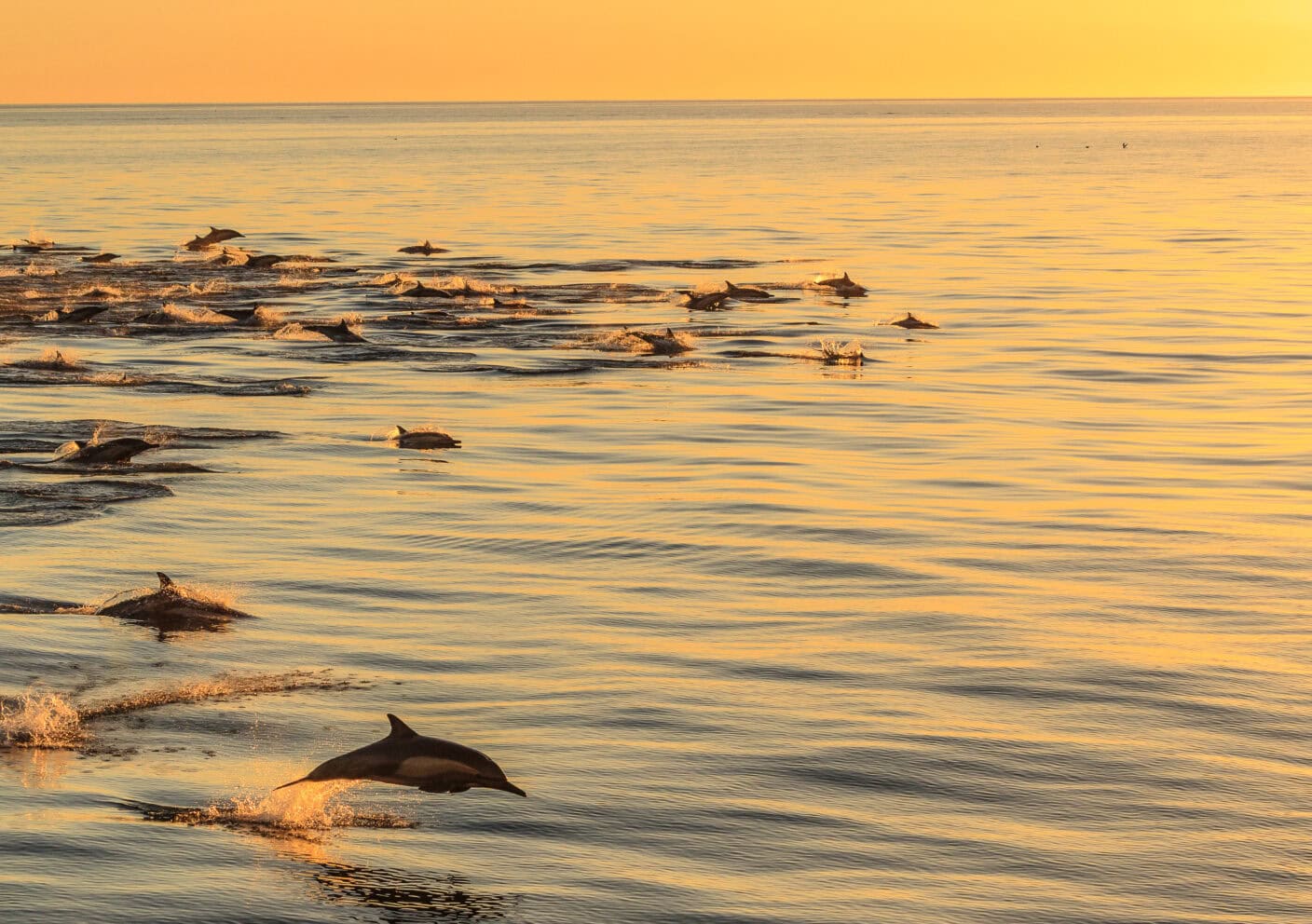
Choosing the Right Baja Whale Expedition
With so many options, how do you plan the perfect Baja whale watching trip? Here are a few tips:
- Opt for a Multi-Day Experience: Multiple outings mean more chances to encounter whales, especially important if weather delays one of your excursions.
- Combine Pacific Lagoons with the Sea of Cortez: For the ultimate Baja whale expedition, choose an itinerary that includes both the gray whale lagoons and Loreto or La Paz.
- Travel with Ethical Operators: Look for companies that follow Mexico’s whale watching regulations, avoid chasing whales, and limit the number of boats in the water at a time.
At Expedition Trips, we carefully vet every partner to ensure responsible wildlife encounters and craft itineraries that maximize your time with the whales while minimizing long overland transfers.
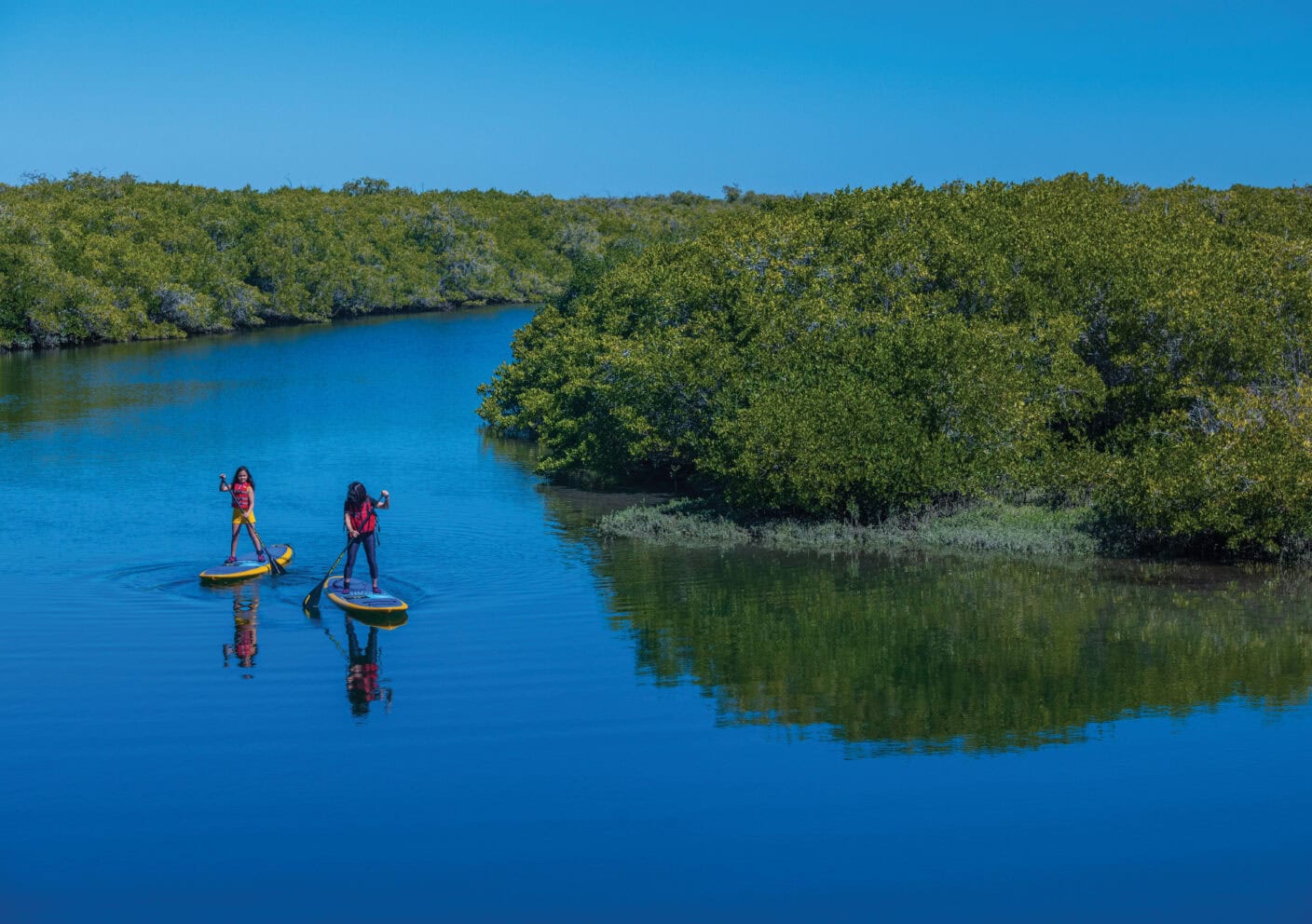
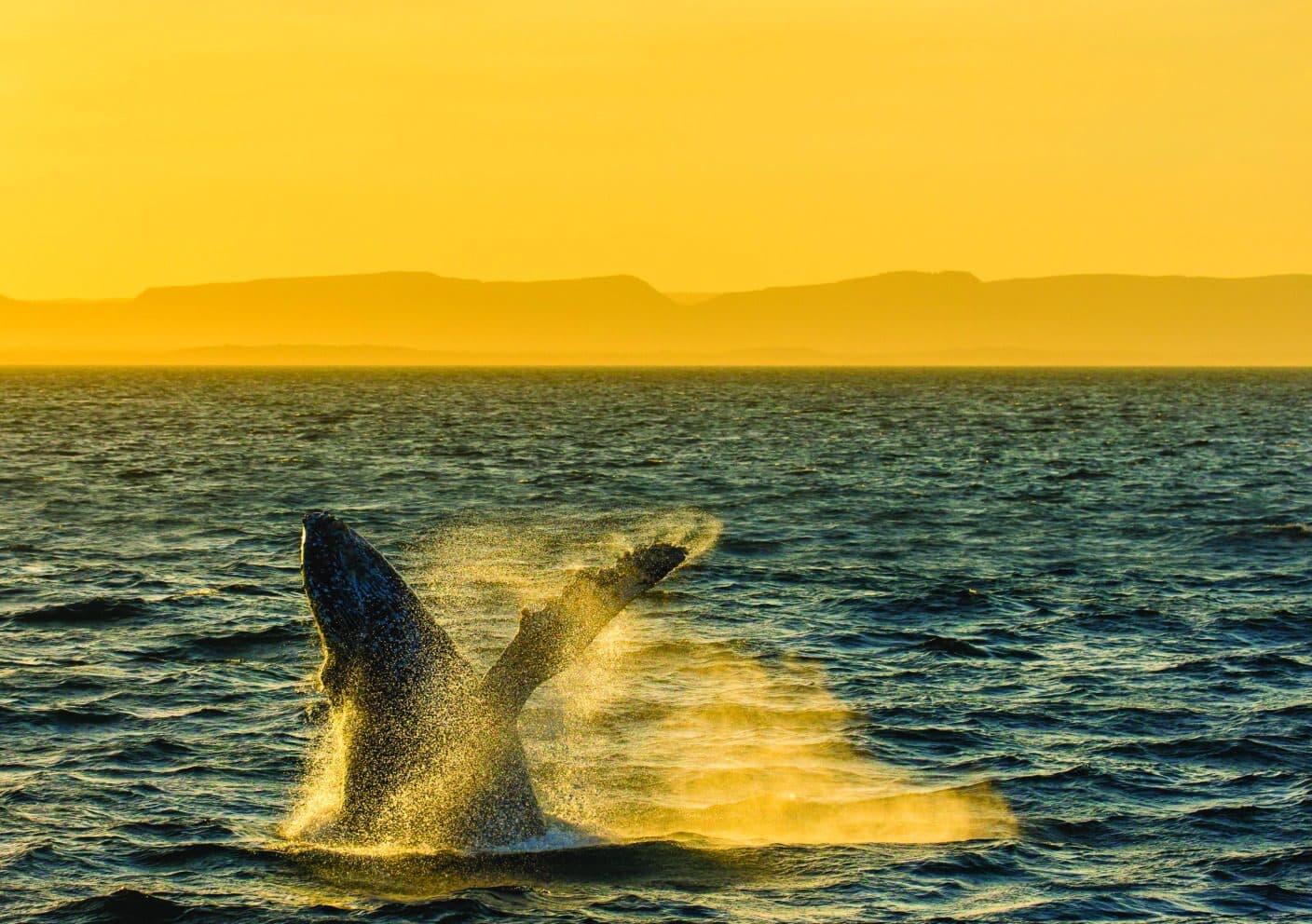
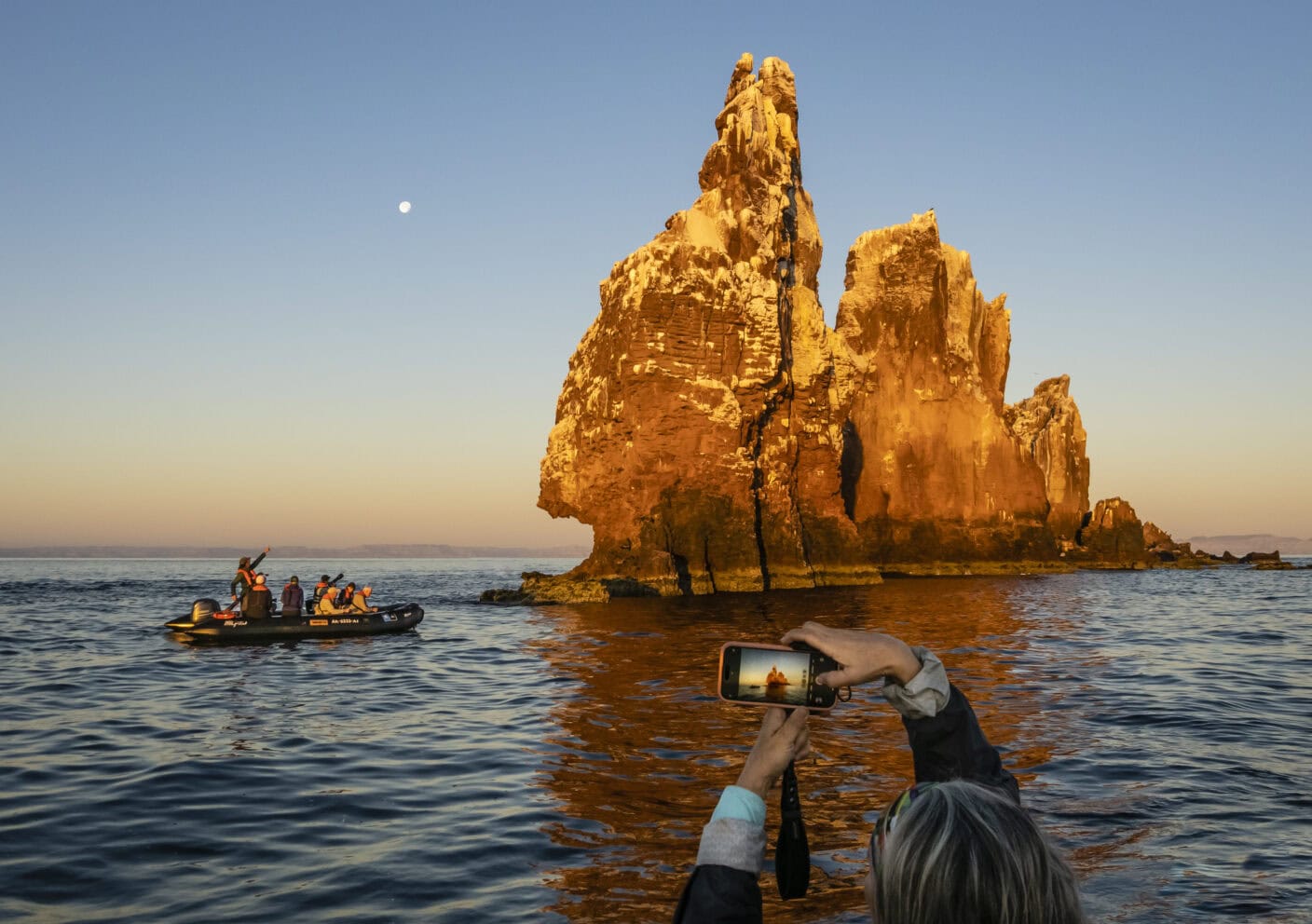
Final Thoughts
Whether you are an avid wildlife traveler or taking your first expedition cruise, a Baja whale expedition delivers encounters that are both humbling and transformative. If you’ve ever dreamed of connecting with the ocean’s giants, Baja California is where those dreams come to life.
